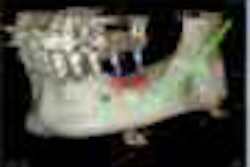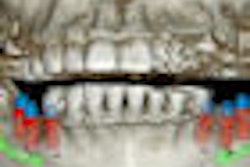Cone-beam CT (CBCT) is not superior to intraoral radiographs in detecting occlusal caries, according to a study in Dentomaxillofacial Radiology (December 19, 2011).
Researchers from Virginia Commonwealth University School of Dentistry used the Galileos cone-beam CT system (Sirona Dental Systems) and an intraoral imaging system (Planmeca) to image 60 extracted teeth.
Six observers looked at both modalities and used a five-point confidence scale to evaluate the presence or absence of occlusal caries. Histology was used as the gold standard.
The mean value and standard deviation of area under the curve (AUC) was 0.719 ± 0.038 for cone-beam CT and 0.649 ± 0.062 for the intraoral radiographs, the study authors reported. The analysis of variance (ANOVA) results demonstrated that there was no significant difference between the modalities and the observers. Four out of six observers reported higher sensitivity but lower specificity with CBCT. The Wilcoxon exact P-value showed no difference in sensitivity (0.175) or specificity (0.573) between the two modalities.
"Based on the results ... the Sirona cone-beam CT unit cannot be used for the sole purpose of looking at occlusal caries," the researchers concluded.



















